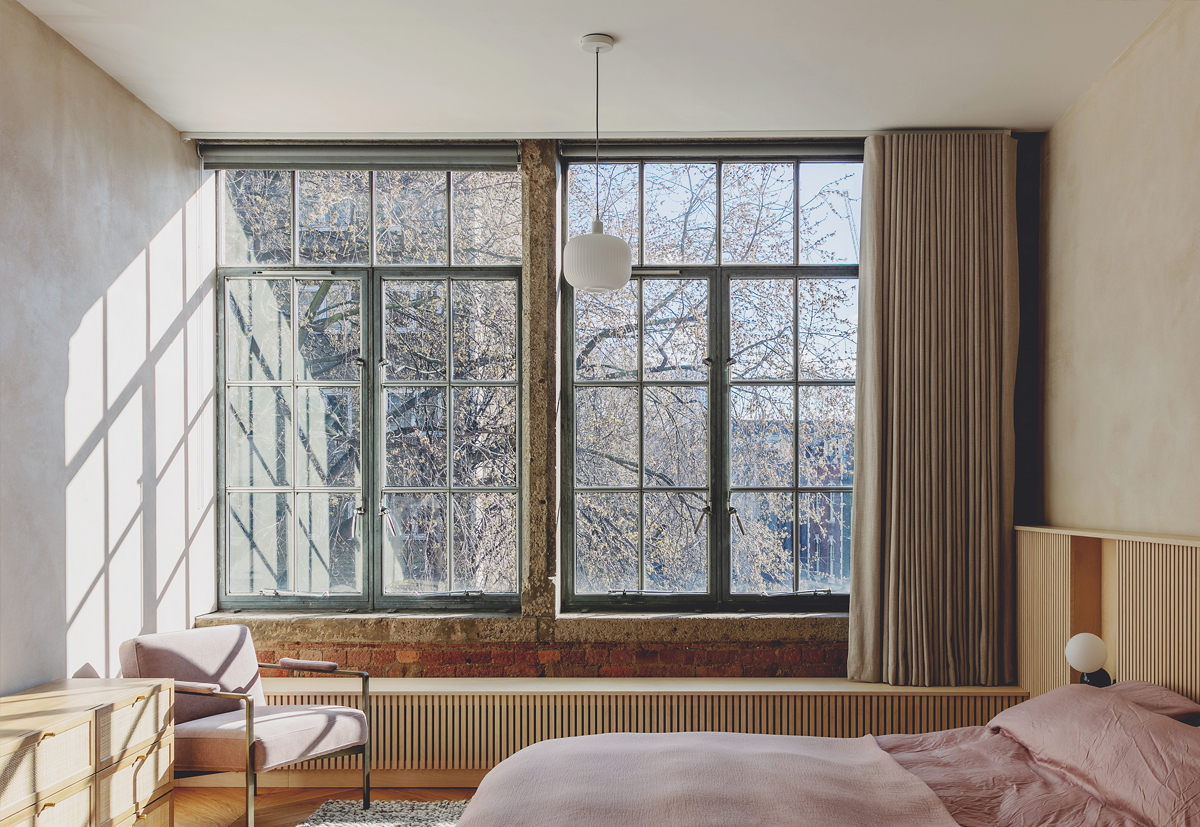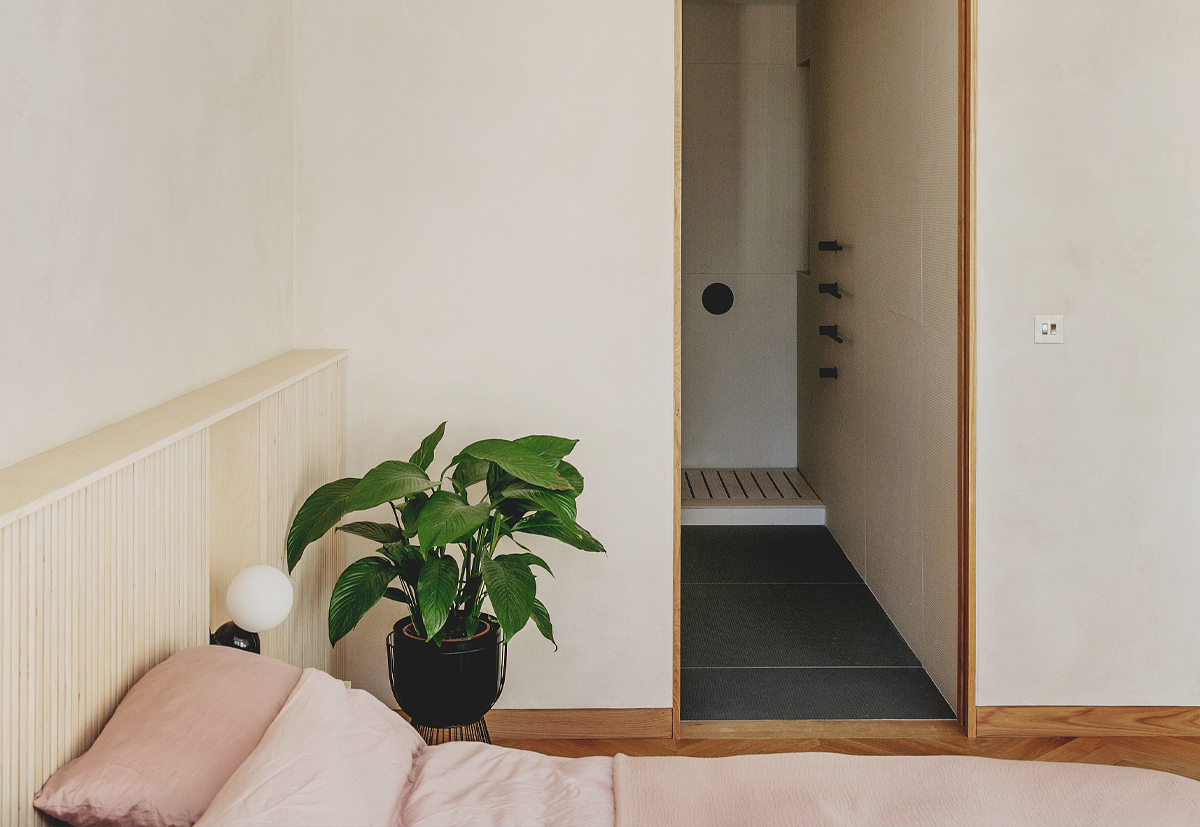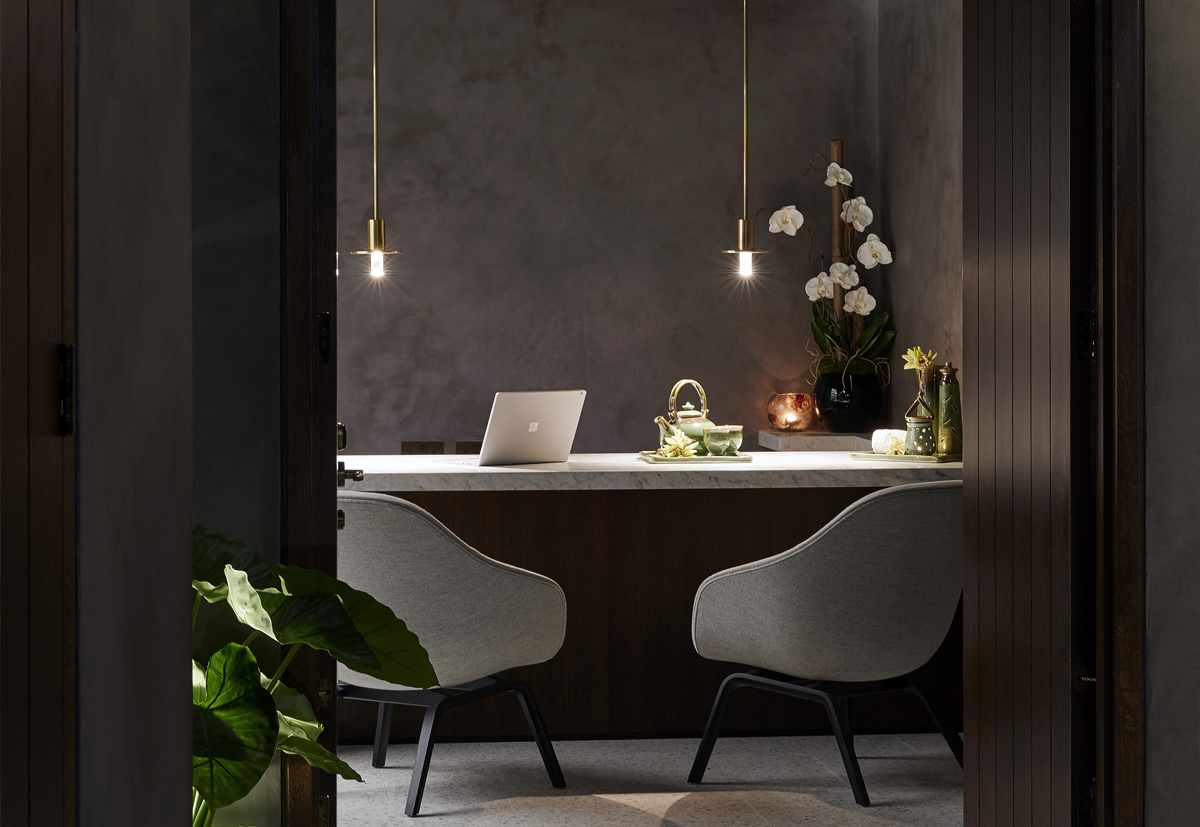
Retrofirst
Emil Eve Architects have sensitively remodelled a Victorian warehouse apartment in Clerkenwell with a design that juxtaposes historic texture with contemporary interventions to create a rich and layered dwelling.
The apartment is on the 2nd floor of a large brick building that fronts St John Street, with its high-end furniture showrooms and cafes. Acquired as a large empty shell, the space consisted of an industrial palette of exposed brickwork walls, columns and board-marked concrete ceiling slab.
Although an industrial palette can feel quite raw and harsh, the materials had such a beautiful range of tones and textures, they were retained and enhanced. Emil Eve’s approach was to contrast these rougher historic surfaces with contemporary interventions in a carefully considered palette of materials to complement the existing tones and create a warm and inviting home. A lot of timber was incorporated: both oak and lime-washed birch plywood, which bring a warm and domestic atmosphere to the spaces. Clayworks Clay Plasters, in a Smooth White Finish, soften the non-brick walls and capture the subtle changes of the light throughout the day.
The reimagined apartment is a comfortable home rich in materiality and texture. It reflects the historical industrial character by retaining the maximum perimeter of existing exposed raw brickwork and concrete.

Retrofirst
Retrofirst is a campaign led by Architects Journal to promote retrofit of old buildings wherever viable, with the conservation of as many materials as possible to prevent waste. Of the 200,000 tonnes of waste we produce each year in the UK, almost 2/3 is construction waste. More than 600 architecture practices have now signed up to the campaign.
The greenest building is the one that already exists
Historic England claims that carefully retrofitting old buildings can contribute to significant carbon savings in the built environment sector. Retrofitting a detached Victorian home for example, could reduce carbon emissions by up to 84 per cent in new research urging re-use over demolition.
Retrofit of existing buildings is not only cost-effective but also conserves and enhances existing places and neighbourhoods. Re-purposing buildings make substantial embodied energy savings. Indeed, the Climate Change Committee Chair said in July 2021 that the government should promote the reuse of buildings and scrap VAT for retrofits providing sustainability improvements are made.

Clay and brick
Clayworks and Emil Eve Architects were joint winners of the Architects Specification Award in 2020 for their ground-breaking collaboration to create a clay plaster that protected historical brickwork and enhanced the unique aesthetics of the bricks in the basement of a Victorian building.


Emile Eve specialises in working with historic buildings, complex briefs and sensitive locations. They bring a unique response to each project rooted in the story of the place and the needs of the client.
Each design seeks to explore project-specific methods of craft and construction.
For more pictures, please see our case study feature.

